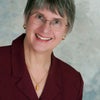Picture this scene at Wartburg Theological Seminary, the graduate school where I teach. Classes start early. Alert, eager, engaged, we dig into studies together. Although I may sit at the front of the room, ten minutes into the hour, it is not just my wisdom students copy down, but some new insight we discover together that none of us would have thought of on our own. Next is chapel, followed by time in the refectory to connect. One hears a buzz about global concerns, new student projects, and meetings. By noon conversation has turned into action perhaps in the Dubuque community, perhaps in the broader church and world.
Learning together, life together, all over the place. Yes, students respect the faculty. Likewise faculty respect students, their ideas, gifts and experiences.
Wartburg Seminary, is a strong academic institution. And a strong learning community. The two go together. When any environment is merely hierarchical, assuming knowledge is inside only one person -- the professor or teacher -- teaching and learning are limited. Appropriate teaching authority lies in setting the stage for people to be learning together.
For me to lord it over my students (Oh, did I say "my"?) is to misinterpret my role. That is not to say we professors should abdicate our responsibility to teach, and to read, research, and publish. And there is accountability, mutual accountability. But students do not write a paper merely for the professor, rather, as adult learners, they study, read and write for their own growth and therefore learn in order to serve in the world.
Teaching and learning in community is extraordinarily challenging. It is much easier to deliver a lecture while others remain quiet, "at our feet," so to speak. But we are called to teach in the midst of people's real lives, real needs, and to interact with them.
We are called to teach, believing wisdom resides inside each person. That opens us to receive a student's new insight, questions, comments, and living examples. We learn from those whom others might discount. We learn across gender, socio-economic, racial boundaries.
No one student is at the head of the class. In fact, the shape of the class and learning itself changes. Amazing what we can learn together. This is higher education.
